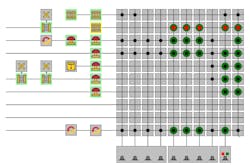ABB’s Protection Library Eliminates Need for Safety PLC
The debate over using a single PLC for control and safety or mandating the use of a separate PLC for safety functions continues, but it appears as if more automation suppliers are backing the idea of using a single PLC for control and safety. The primary reasoning behind this is that multicore processors enable one PLC or industrial computer to handle multiple functions that, until recently, required multiple control devices.
Read more about how microprocessors are dramatically altering automation equipment.
ABB’s recent release of its Protection Library for the AC 800M High Integrity controller supports ABB’s stance in the “one PLC for safety and control” camp. According to ABB, this TÜV-certified library “contains the components required for efficient engineering of functions normally handled by a separate machine safety PLC. These library objects have been designed in compliance with the EC (European Community) machinery directives and IEC standards.”
Having the historically separate functions of safety and control reside on one PLC and managed with the Protection Library not only complies with international safety standards, but results in significant training and engineering savings as well as improved visibility into systems operation, according to ABB.
The training, engineering and visibility improvements cited by ABB stem from the integration of the Protection Library with ABB’s System 800xA control system and the resulting automatic generation of compliant application code. This integration reportedly allows for downloading of incremental safety engineering via the library as well as the addition of safety loops without stopping the controller/PLC. In addition, having safety and non-safety applications running in the same system allows parallel verification and commissioning of logic.
One of the more interesting components of the Protection Library is its Matrix control module. This module is used to connect input objects, such as safety guards and e-stops, to output objects that implement the actions and send feedback. Inputs and outputs can be added to the system configuration at any time by reusing an existing object or creating a new instance from the library. Once the connection is made in the matrix, all required logic is automatically created. This is critical to logic verification and commissioning.
Key features of the Protection Library that enable its functionality as described above include:
• Certified control module types and function blocks specified by PLCopen, an independent organization that defines safety related functions;
• Configuration examples and object types for deployment and process simulation;
• Expansion capability for custom application sizing;
• SIL 3 connection matrix object for communications configuration and logic generation with built-in compliance logic and feedback functionality;
• SIL3 input objects including e-stop, electro-sensitive protection equipment (light curtains), Guard, EnableSwitch, and OrderButton (key switches);
• SIL3 output objects for connection to standard process objects with power handling or I/O.
About the Author
David Greenfield, editor in chief
Editor in Chief

Leaders relevant to this article:
